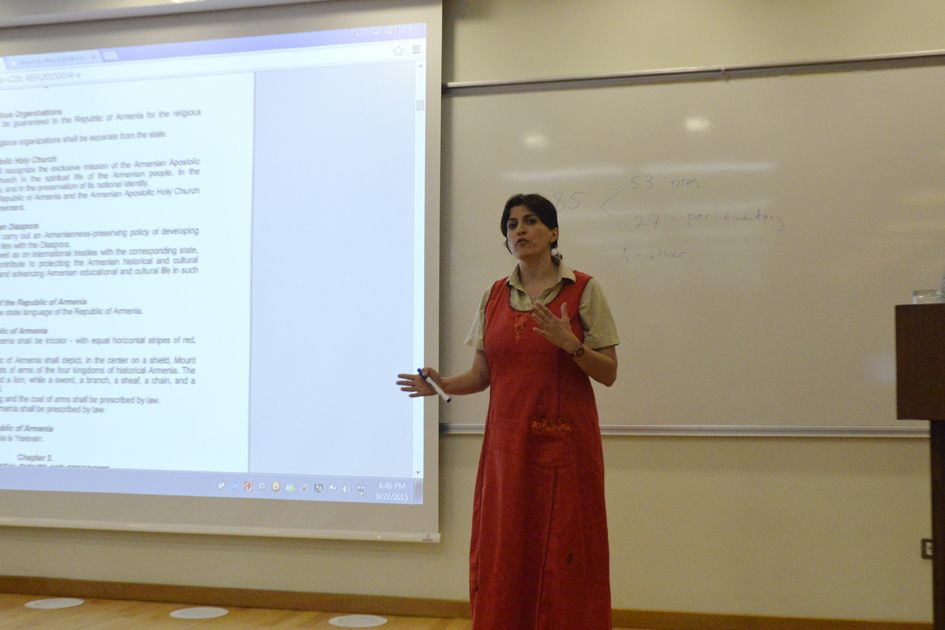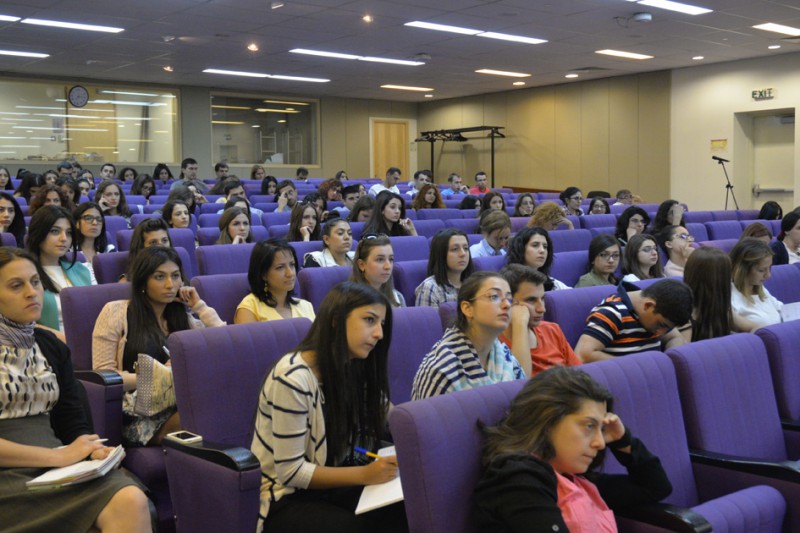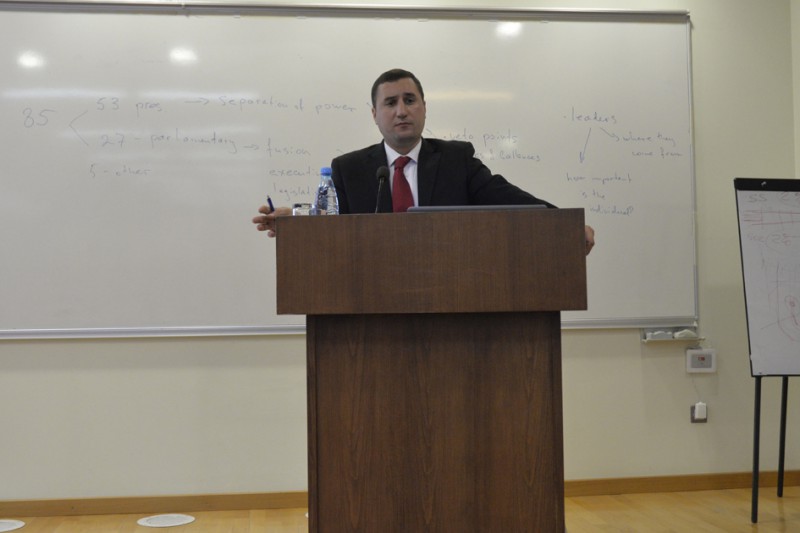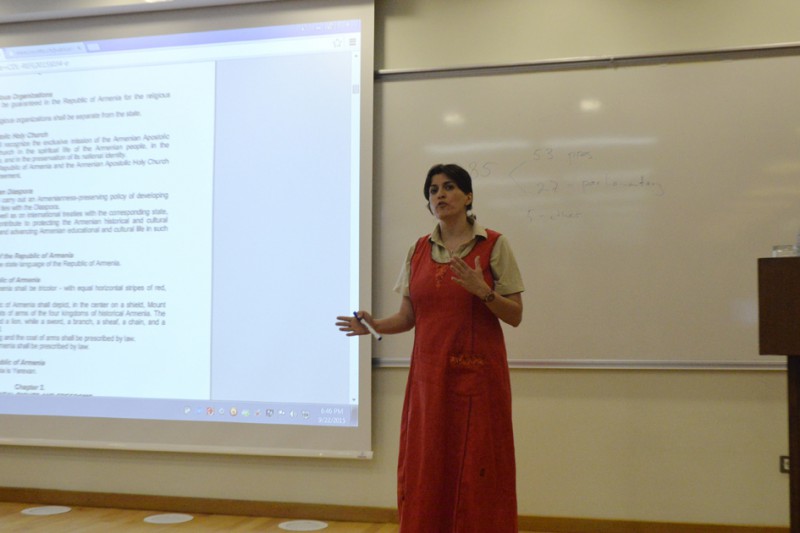
LL.M. Program Holds Constitutional Reforms Informative Discussion
2 min readYEREVAN, Armenia – On September 22, 2015, the American University of Armenia (AUA) Master of Laws (LL.M.) program, together with the Master’s in Political Science & International Affairs (PSIA) program, had an informative discussion on the ‘Constitutional Reforms of Armenia.’ The discussion was held by Dr. Yevgenya Jenny Paturyan, Assistant Professor of the PSIA program, and Dr. Gabriel Balayan, Visiting Professor in AUA’s College of Humanities and Social Sciences.
The discussion summarized the processes of parliamentary and presidential forms of government as the two basic systems of organizing democratic societies today. Currently there are around 85 democracies (depending on the definition of democracy used), two-thirds of which are presidential or semi-presidential. However, this preference for presidential systems is recent: most of young democracies that were born during the last two decades opted for this form of government. Both systems have their strengths and weaknesses: presidential systems have a strong emphasis on separation of powers, checks and balances, and more veto points; parliamentary systems are more flexible, have more streamlined decision-making processes, and clearer accountability. Empirical evidence suggests that parliamentary democracies have higher survival rates, higher quality of democracy on average (perhaps because they are older on average), and tend to have larger governments that collect more taxes and spend more. In countries that undergo a change of system (either from parliamentary to presidential or from presidential to parliamentary), the power of the government increases during 3-5 years after the change, but starts decreasing in the long run after 10 years or more.
The speakers also discussed the differences and peculiarities of the current and proposed forms of government from constitutional perspectives. Comparative approaches on the formation of several agencies, including parliament, president, and executive branch and judiciary were introduced according to the regulations of the current constitution and proposed new text.
Special focus was given to the presidential powers currently vested in the president and which of those should remain vested in the president. Peculiarities of the formation of the executive branch in the newly proposed text were discussed, parallels were drawn between current and proposed versions, and new powers of the executive branch were also introduced. National security issues and armed forces chain of command peculiarities were discussed, as well as the proposed executive function of the security council and the formation of new constitutional independence agencies. Finally, the newly proposed formation of the supreme judicial council and appointment of the judges of the constitutional court, as well as other courts, were introduced.
After the presentation, a lively Q&A session was held.



